Agronomy 2051
Fall 1999
"A" Team Horizon - George Odom, David Williams, Adam Pieler, Roy Iwai
![]()
Abstract
Erosion is a natural process of soil degradation that can be controlled by management techniques. On cultivated land, the use of cover materials is common. Two cover materials were compared: pine straw and dense grass. For two separate rain events, runoff and eroded sediment and organic matter were collected from six sample plots covered with the two materials. Results showed that bare soil produces five times more runoff and twenty times more eroded material per aliqout, than with soil with either cover. Pine straw is nearly as effective as dense grass, though due to errors in the experiment, the effectiveness of dense grass may be greater than has been shown. Among the different materials used, the effectiveness must be compared with actual and associated costs.
Introduction
Erosion is a destructive natural phenomenon in which sediment and organic matter is transported from soil by wind and water. This process is influenced by many factors including climate, geology, topography, and vegetation. Human activity, however, is one of the most significant influences that accelerate this land degradation process. Population growth pressure has often led to overgrazing and overexploiting of soil resources, and like cultivation practices of the past, has made the soil vulnerable to erosion with greater loss of structure and nutrients.1 The condition of this soil results not only in the decreased yield of crops in cultivated lands but it also increases the sediment load in our waterways.
On a large scale, rainfall erodes soil more than flowing water.1 Hence, it is important to develop management practices to reduce losses by rain, especially for cultivated lands where such management is economically feasible and suitable. The use of cover crops and plant residues is the most readily used management practice.1 Our intent was to compare the effectiveness of different cover materials, specifically grass and pine straw, and also provide evidence of the impact rain has on bare tilled soil. Runoff from several plots were measured as well as the amount of transported sediment and organic matter off-site.
Materials and methods
Field Design and Sampling
To establish a perimeter for a sample plot in which to collect runoff and eroded soil, six collection traps were installed. Each trap was adjacent to one another on a moderate slope so that rainfall was equal for each trap and runoff would occur on a rain event. The slope of the plot had a 10% grade, consistent for all traps. Two types of cover, dense grass and pine straw, and a control were applied on sets of two 18"x 18" (324 in2) plots. (photos 1-5). Each plot was contained by a metal frame trap sunken into the soil with a pan that funneled runoff into a collection beaker. Rainfall for each rain event was measured using a simple gauge placed adjacent to the traps. Collection of runoff was made the day following the rain event to reduce evaporative loss from the beakers.
Runoff Analysis
Total volume of captured runoff was measured from each plot for each rain event. To measure eroded solids, 50 ml aliquots were taken from each collection beaker after vigorous stirring (to try to create an "uniform" matrix). Aliquots were put into separate evaporating dishes and heated in an oven to obtain oven-dry mass.
Data
Average Rainfall for Rain Events
1 2 1 2
| Diameter of gauge | 3.875 in | 3.875 in | 3.875 in | 3.875 in |
| Area of gauge | 11.79 in2 | 11.79 in2 | 11.79 in2 | 11.79 in2 |
| Mass beaker and water | 322.08 g | 320.02 g | 587.34 g | 567.86 g |
| Mass beaker | 212.13 g | 214.41 g | 212.13 g | 214.41 g |
| Volume of water | 109.95 mL | 105.61 mL | 375.21 mL | 353.45 mL |
| Rainfall per area | 9.33 ml/in2 | 8.96 ml/in2 | 31.82 ml/in2 | 29.98 ml/in2 |
Sample plots with different soil cover
Plot 1 Pine straw
Plot 2 Pine straw
Plot 3 Bare tilled earth
Plot 4 Bare tilled earth
Plot 5 Dense grass
Plot 6 Dense grass
Rain event 1 1 2 3 4 5 6
|
|
|
|
|
|
|
|
|
|
|
|
|
|
|
|
|
|
|
|
|
|
|
|
|
|
|
|
|
|
|
|
|
|
|
|
|
|
|
|
|
|
|
|
|
|
|
|
Rain event 2 1 2 3 4 5 6
|
|
|
|
|
|
|
|
|
|
|
|
|
|
|
|
|
|
|
|
|
|
|
|
|
|
|
|
|
|
|
|
Results
Comparisons between the volume of captured runoff (Figure 1) for sample plots with different cover showed the relative effectiveness of each cover type to reduce runoff from rainfall. The bare tilled soil (reference) had the greatest average runoff for rain event 1, and the pine straw covered soil, the least. The highest actual runoff collected was from the bare soil, exceeding the lowest actual runoff collected from soil with grass cover by more than five-fold.
Sediment and organic matter carried by runoff water from the sample plots (Figure 2) varied greatly from the bare soil to covered soil. The aliquots taken from bare soil contained nearly twenty times more solid matter than from either pine straw or grass covered soil. The sediment load in aliquots from pine straw covered soil and grass covered soil were nearly equal. For the two rain events, though the amount of precipitation was far greater in rain event 2, the amount of eroded solid in the aliquots did not vary greatly for all sample plots. The rate of erosion thus was fairly constant for each particular cover, but the rate of erosion for bare soil was far greater than the other two.
Discussion
From this short experiment, it is evident that soil cover greatly reduces both runoff and erosion. We expected to see an increase in erosion with the different covers in the following order: dense grass, pine straw, bare tilled. However, the results showed surprising effectiveness of pine straw cover, which performed relatively as well as dense grass. It is evident that bare soil conditions cause off-site pollution and that even the simplest management technique can help curb erosion dramatically.
Many errors in this experiment affected the results, and our findings may not be as optimistic as is shown in the data. In the set up of the metal frames around the plots, ply-wood was used to shield the collecting pan form rain. During the rain events, the wood may have sagged and diverted some runoff water over it and away from the collecting beaker. Another grave material/method error was that for rain event 2, the runoff volume exceeded the collection beaker size and thus total runoff volume could not be analyzed. Sediment was also lost with the overflow of water. A personal error is evident in the volume of captured runoff for plot 6 (dense grass), where the beaker was not emptied from the rain event prior to beginning the experiment. Noting that the actual captured runoff in plot 5 for rain event 1 was the lowest of all plots, we expect that the runoff for dense grass to be lower than that of pine straw cover. By examining the soil structure created by the root mat, one would also be led to the same conclusion. The dense grass has more organic matter present in dried and decomposing leaves which could have contributed to a higher portion of the eroded solid (sediment and plant residues) than for pine straw, so the actual degree of sediment lost may be lower.
In managing land to control erosion, the use of soil cover is the most readily used technique. The effectiveness of cover, depends not only on the type of cover to prevent runoff and sediment loss, but also the amount of cover used. Where large areas of land are involved or where large costs are involved in working the land, the cost of cover in the necessary amounts must also be considered. In a comparison of the effectiveness, effort, and economy of the two covers presented here, from our results it is shown that pine straw may be the best option as a management tool.
Reference
1 Brady, Nyle C. The Nature and Properties of Soils, 1996. Prentice
Hall. Upper Saddle River, New Jersey.
Figure 1. Runoff from six sample plots with different covers
Figure 2. Eroded soil in 50 ml aliquots from six sample plots from
two rain events.
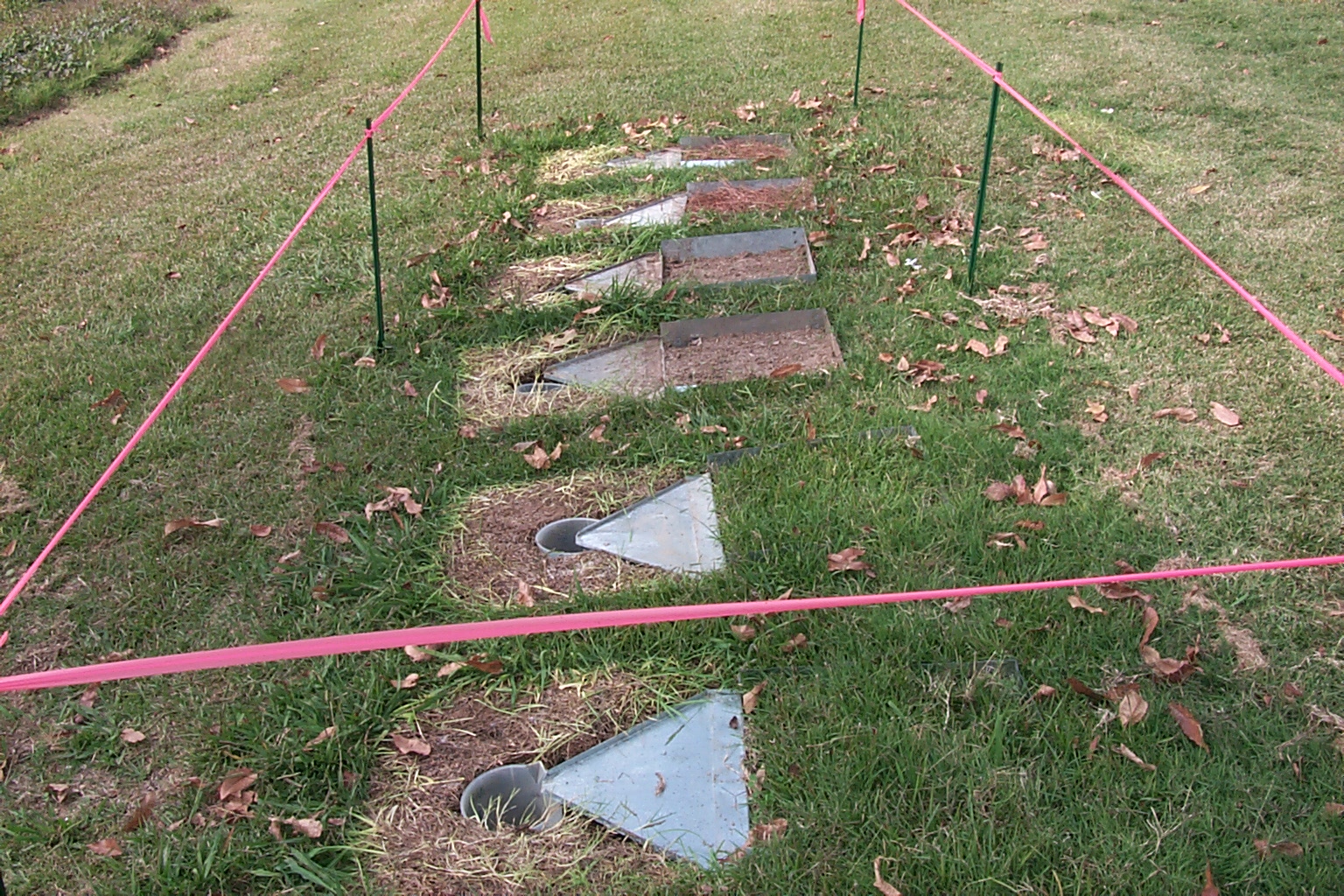
Erosion / Runoff Plot Layout
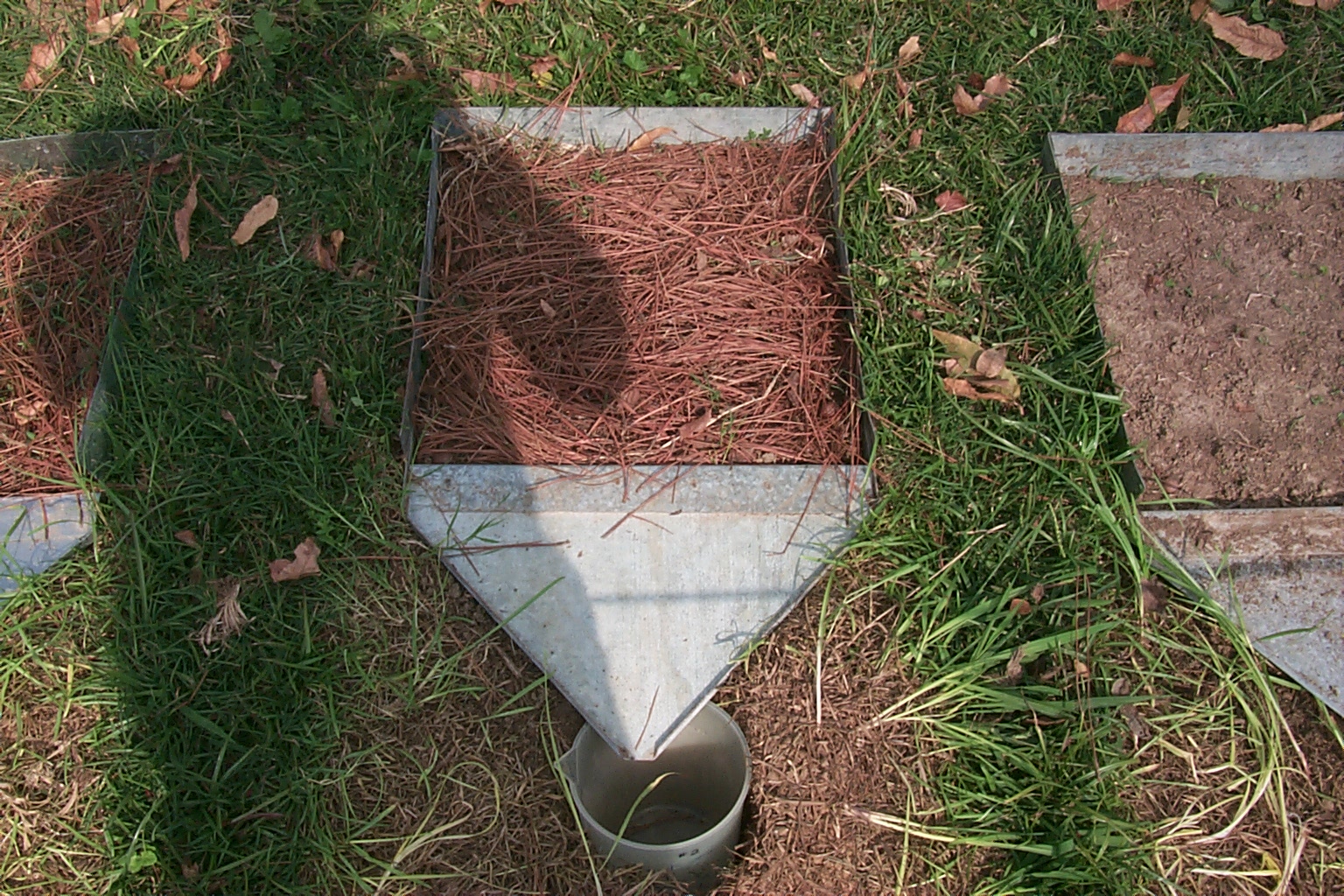
Pine Straw Plot
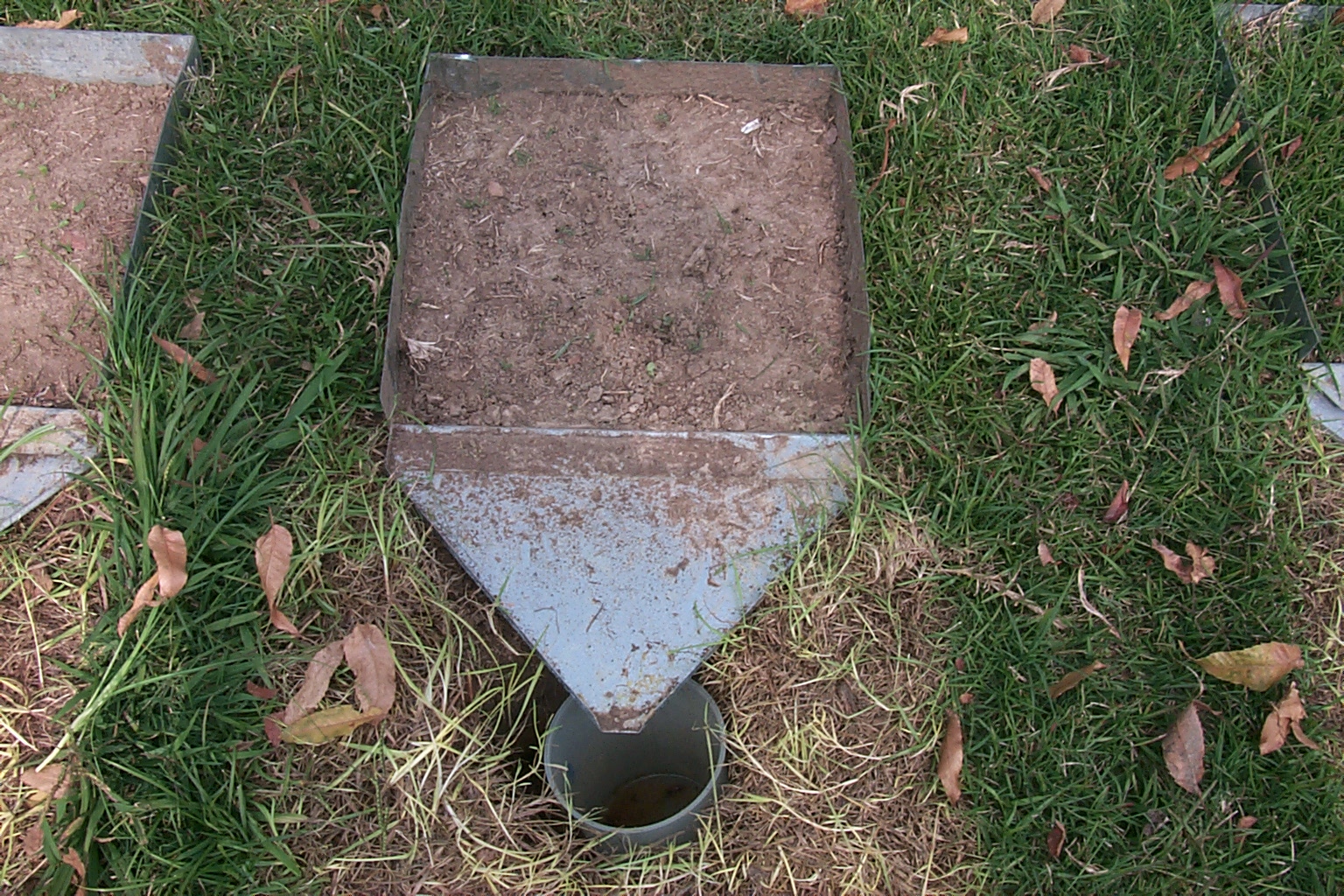
Bare Soil Plot
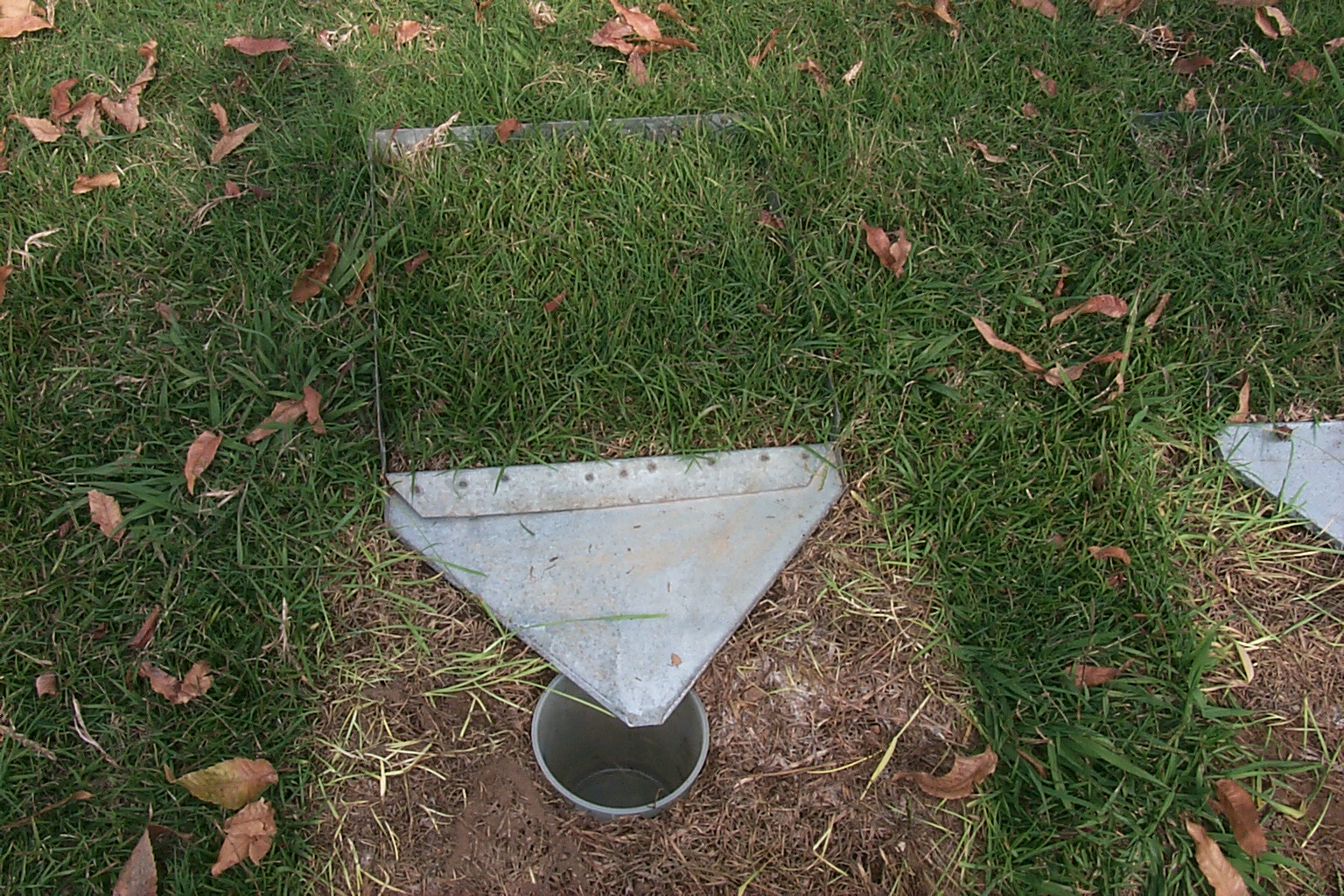
Grass Plot
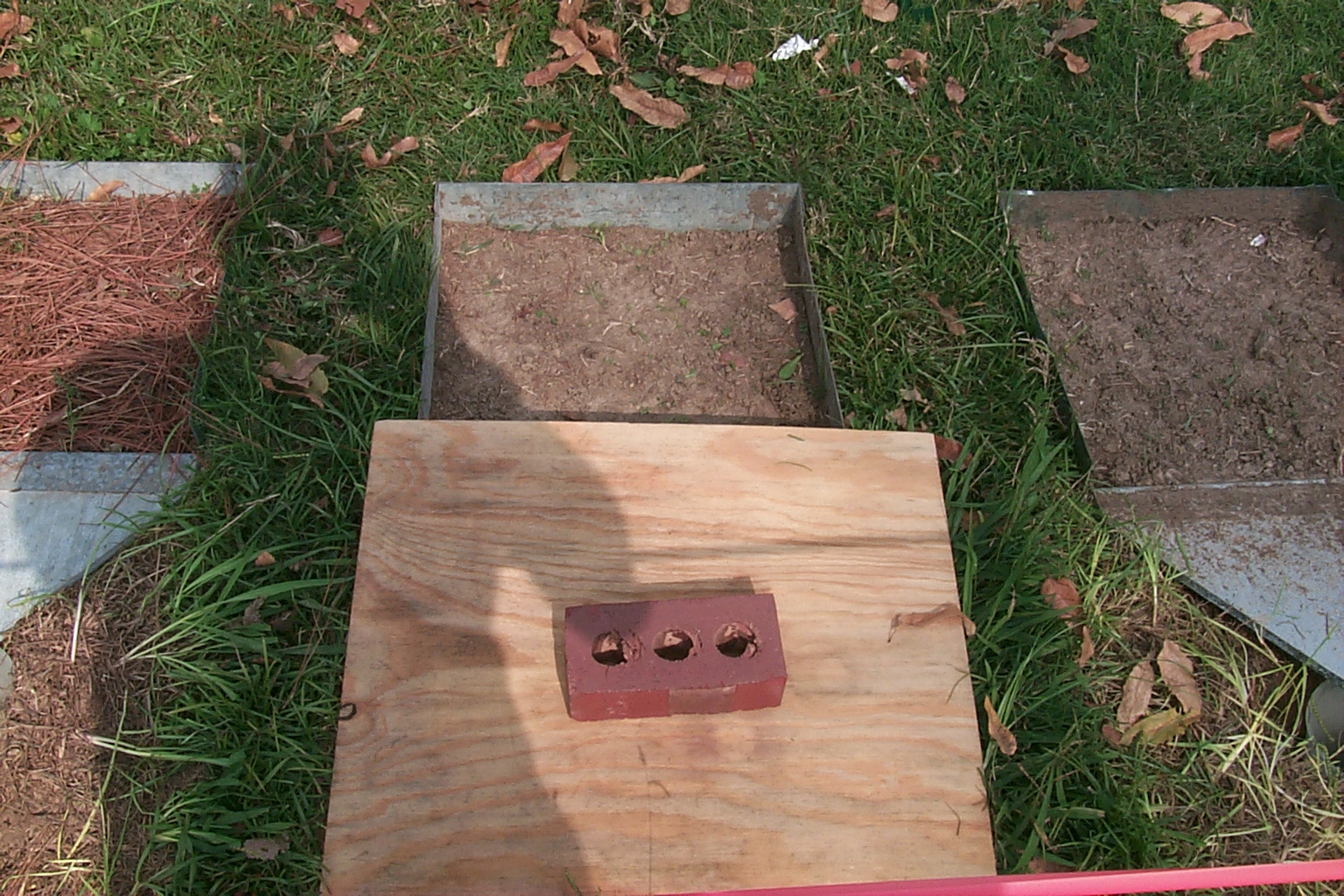
Collection Trough Covered